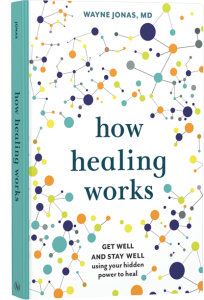Co-authored by Genevieve Walker, PhD, a medical writer with more than 15 years of medical writing experience and 25 years of healthcare experience.
Depression. Irritability. Your face, neck, and chest turning red as you experience a wave of heat followed by dripping sweat. Waking at 3 a.m. Putting on weight when you’re sure your eating habits haven’t changed in years. Unexpected acne, headaches, brittle nails, vaginal dryness. What’s going on?
All these symptoms can be part of the same condition: perimenopause.
What is perimenopause?
Health care providers often call this time “the menopausal transition.” Like adolescence, when a woman’s body develops the capacity to become pregnant and carry a child, perimenopause is a time of change that each woman experiences differently. Some of us sailed through adolescence without a single pimple. Others struggled with acne, painful cramps, or unexpected weight gain as our hormones surged and then balanced.
While adolescence takes us into the fully fertile years, perimenopause brings us out of them. It is a period of time when the ovaries gradually begin to make less estrogen, but before menstruation actually stops, which is called menopause.1
Though some women’s periods simply end without fanfare, many experience a physical, mental, and emotional transition that lasts anywhere from a few months to more than a decade. The average age of menopause is 51, and the average age of perimenopause is 47.2 It’s important to remember, however, that about half of women will enter the transition earlier or later—that’s how we know what the “average” is.
Is perimenopause the same as menopause?
Common perimenopause symptoms[i],[v]
- Changes in menstrual periods (the time between cycles is longer, and some months may not include a period at all).
- Hot flashes (sudden sensation of being very hot, usually in the face and chest, with sweating).
- Night sweats (hot flashes that happen at night).
- Insomnia, sleep problems.
- Depression and mood swings.
- Dry, itchy, or sore vagina, which may lead to painful sex and diminished sexual interest.
- Difficulty holding urine, leaking urine.
- Forgetfulness and difficulty thinking clearly.
- Headaches.
- Weight gain, especially around the waist.
No. The word “peri” means “around,” and doctors define it as the transition we discussed earlier.
Menopause officially begins when ovaries stop releasing eggs. While there’s no definitive “test” for when someone is in menopause, health care providers consider a full calendar year of missed periods the standard.[i] Your provider may also suggest a blood test to check your levels of follicle-stimulating hormones (FSH). Your FSH levels may increase as you enter menopause because your body is working harder to stimulate your ovaries into releasing an egg. As a woman moves towards menopause, an egg is not regularly released each month, but the body may continue to try.
Am I in perimenopause?
If you are 35 or older and searching for “menopause symptom checker” online, you may wonder if you’re already in perimenopause. However, you are more likely to be in what doctors call the “later reproductive years,” generally the late 30s and early 40s. Changes during this time include shorter menstrual cycles (less time between periods).
In perimenopause, time between periods tends to stretch out, which means there may be months where you do not have a period at all.[iii]
The good news is that few of us will have every single perimenopause symptom, or at least not all of them at once. Even more interesting, the transition seems to be different for women in different cultures.[iv] For example, many fewer women in Japan report having hot flashes – feelings of heat, flushing, and sweating – than in the United States. Joint pain is a common symptom in some countries, but not in others. So how can you learn more about what to expect?
The National Institute on Aging has a reliable list of perimenopause symptoms, along with the North American Menopause Society. You can also learn more about common symptoms in the text box below.
Where to find safe, high-quality information
About hormone replacement therapy
From the 1960s through the 1990s, many women were prescribed estrogen or a combination of estrogen and progesterone to manage perimenopause symptoms. In 2002, however, a major research study showed that hormone replacement therapy (HRT) increased the risks of heart disease and breast cancer. Prescriptions dropped off abruptly.[vi] Now, when fewer women take HRT automatically, more of us may be experiencing the changes of perimenopause.
If you’re entering perimenopause now and don’t recall your mother talking about it, she may have taken hormones that prevented or minimized symptoms. She may also have had surgery called a hysterectomy that removed the uterus and sometimes the ovaries. This surgery ends the transition stage because a woman who has her uterus removed is in menopause.
Today, women’s health specialists take a more personalized approach to HRT. Pills, patches, and creams can supply hormones selectively, such as vaginal creams for dryness and urinary symptoms, treating just the area where you apply them. Your health care provider can help you determine your risk and create an appropriate treatment plan.
Safe source checklist
The best sources of information on perimenopause and menopause are:
- Non-commercial. If the site is connected to a company that makes a device, drug, or product, you will probably be steered to that product at the end of any quiz or information provided. Be cautious about any device, drugs, or products that are not approved by the U.S. Food and Drug Administration (FDA).
- From reputable, provider-led health care associations, such as the North American Menopause Society and American College of Obstetricians and Gynecologists. Chances are good you’re looking at reputable information if the source encourages you to talk with your health care provider, includes a “find a specialist” feature, or both.
- Government sponsored. If you’re on the internet, look for URLs that end in .org, are linked to a foundation or other nonprofit, or are government-based, such as .gov, .ca (for Canada) or .au (for Australia).
Avoiding false cures
Why do we stress working with your health care provider to manage symptoms of perimenopause? In short, there are plenty of dangerous, substandard, or FDA-unapproved treatments out there. Some disreputable companies capitalize on the fact that many people equate personal worth with being young and will try to sell you treatments that promise to stop or reverse the transition to an older age.
From extreme diets and boot camp programs to plastic surgery and vaginal laser treatments, many women are willing to undergo considerable pain and effort to avoid the signs and symptoms of getting older. Check any advertised treatment to see if it is FDA-approved.[vii] If it is recommended by a celebrity, be cautious and talk with your health care team. If your insurance does not cover the cost, ask them why. Most unapproved treatments are “self-pay”—you cover the cost and sign a waiver before you receive them.
We offer a booklet on integrative health approaches to menopause that walks you through evidence-based strategies for coping. For example, there is evidence that aromatherapy, yoga, and acupuncture can help menopausal symptoms. Download the booklet free here.
How to be your own advocate
In her late 30s, Alicia started experiencing vaginal yeast infections—over and over, one after another. She saw a general practitioner who was concerned she might have diabetes or HIV and tested her for both. Another general practitioner recognized her vaginal pH was out of balance and recommended eating yogurt. While those were useful steps, it was not until Alicia saw an obstetrician-gynecologist (ob-gyn) who was familiar with the changes that can happen to the vagina before menopause that she got a treatment that helped: an estrogen cream to use in the vagina twice a week. The doctor also helped Alicia’s friend Laurie with her main perimenopause symptom, depression, by prescribing a combination of antidepressants and regular exercise to boost Laurie’s mood.
The lesson? See a practitioner who is specializes in perimenopause. Some general practitioners specialize in women’s health and others do not, so be sure to ask.
The “Find a Menopause Practitioner” feature of the North American Menopause Society website will help you find a health care provider trained to recognize and treat symptoms related to menopause. You can also use WebMD.com’s physician finder to locate a provider who may not have Menopause Society certification but specializes in women’s health and menopause-related conditions.
Above all, persist in asking questions.
Your experience in perimenopause may change over time, and so should your symptom management. A whole-person approach to care that includes medication and lifestyle modifications, such as exercise or meditation, can be tailored to your specific needs and adjusted as you journey toward the next stage of your life.
References
[i] Casper RF. Clinical manifestations and diagnosis of menopause. UpToDate. Available at https://www.uptodate.com/contents/clinical-manifestations-and-diagnosis-of-menopause
[ii] McKinlay SM, Brambilla DJ, Posner JG. The normal menopause transition. Maturitas. 1992;14(2):103
[iii] Sherman BM, Korenman SG. Hormonal characteristics of the human menstrual cycle throughout reproductive life. J Clin Invest 1975; 55:699
[iv] Hall L, Callister LC, Berry JA, Matsumura G. Meanings of menopause: cultural influences on perception and management of menopause. J Holist Nurs. 2007 Jun;25(2):106-18. doi: 10.1177/0898010107299432. PMID: 17515566
[v] Perimenopause: Rocky road to menopause. Harvard Health Publishing, Harvard Medical School. Available at https://www.health.harvard.edu/womens-health/perimenopause-rocky-road-to-menopause. April 14, 2020
[vi] Ettinger B, Wang SM, Leslie RS, et al. Evolution of postmenopausal hormone therapy between 2002 and 2009. Menopause 2012; 19:610–615
[vii] Gordon C, Gonzales S, Krychman ML: Rethinking the techno vagina: A case series of patient complications following vaginal laser treatment for atrophy. Menopause. 2019; 26(4): 423–7

Take Your Health Into Your Own Hands
Drawing on 40 years of research and patient care, Dr. Wayne Jonas explains how 80 percent of healing occurs organically and how to activate the healing process.

